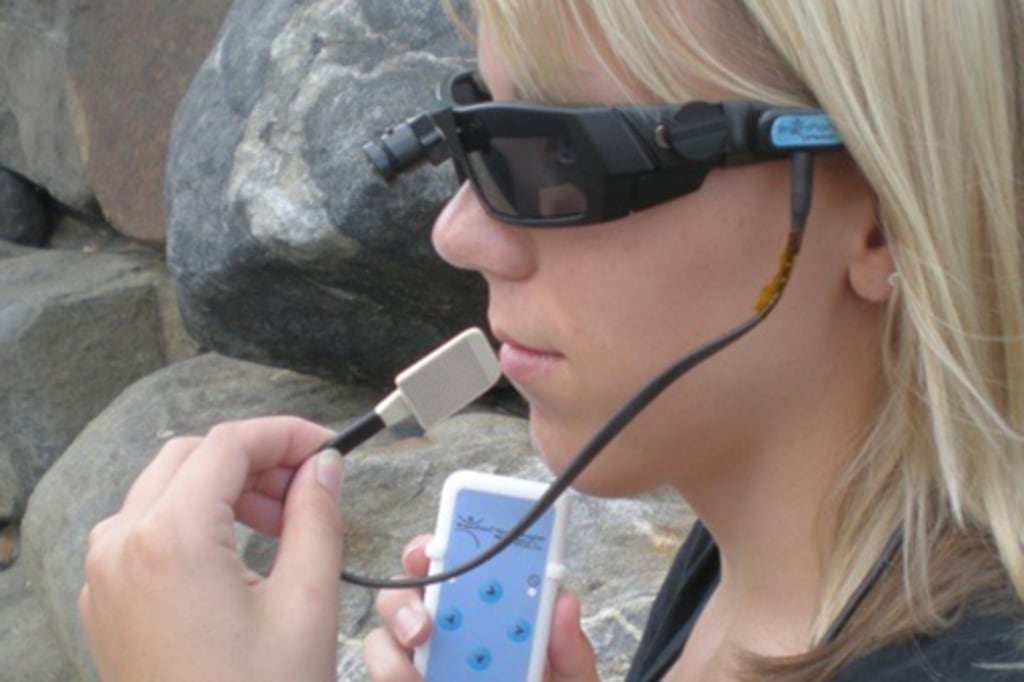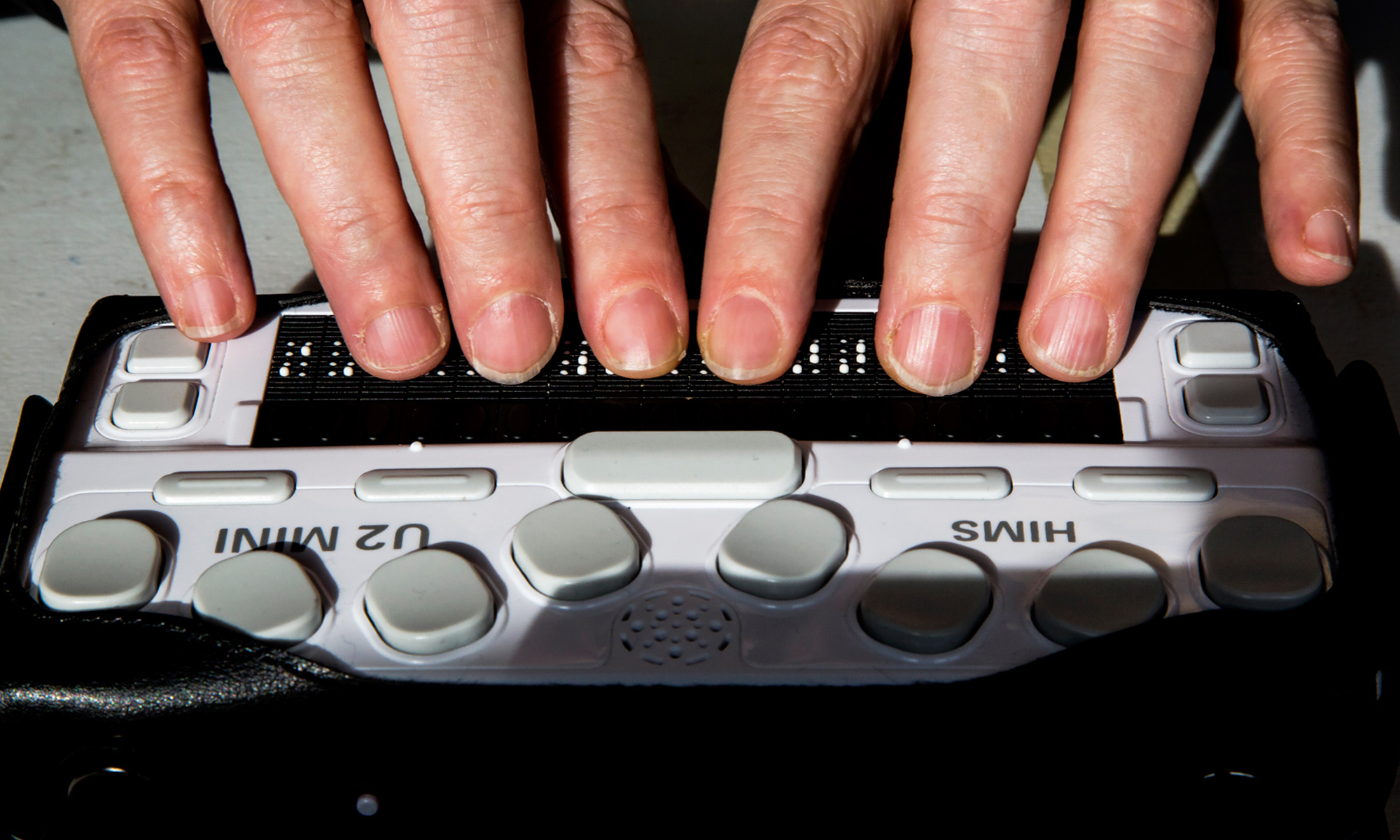Wearable Technology for Low Vision: Making Routines Easier
Wearable Technology for Low Vision: Making Routines Easier
Blog Article
Empowering Independence With Assistive Technology for the Blind
The integration of assistive modern technology into the lives of people with aesthetic disabilities stands for a substantial development in promoting independence and self-sufficiency. From innovative display viewers to sophisticated smart canes, these tools not just improve day-to-day navigating and communication yet also empower users to engage meaningfully in numerous facets of life. As we discover the myriad benefits and real-world applications of these innovations, it ends up being vital to take a look at the underlying factors that add to their effectiveness and the possibility for future advancements in this essential field.
Review of Assistive Modern Technology

The development of assistive innovation is grounded in principles of inclusivity and empowerment. Technologies in software program, equipment, and sensory enhancements provide customers with choices tailored to their details demands. From display viewers that transform text to speech, to tactile devices that convey information with touch, these devices transform the means individuals engage with their environments.
In enhancement to useful applications, assistive modern technology cultivates greater social incorporation and involvement in different fields, consisting of education and learning and employment (AI-powered visual aids). As study and advancement remain to evolve, the potential for assistive modern technology to additionally improve the lives of aesthetically damaged individuals stays encouraging, paving the method for a much more equitable culture where everyone can prosper
Sorts Of Assistive Instruments
A selection of assistive devices have emerged to sustain individuals with visual disabilities, each made to fulfill certain requirements and enhance everyday performance. These tools range from low-tech solutions to modern advancements, giving varied options for users.
Low-tech devices consist of magnifiers and large-print products that help in reading and writing. Braille tools, such as Braille styluses and slates, enable tactile reading and interaction. Alignment and flexibility aids, like white walking canes, help users navigate their setting securely.
On the greater end of the range, electronic magnifying systems and screen readers provide substantial support. Electronic magnifiers enable users to enlarge message and photos on screens, while display visitors convert electronic material right into manufactured speech, promoting accessibility to details on mobile phones and computers.
Mobile phone applications additionally play an important role, giving features like text acknowledgment and navigating aid. Wearable innovation, such as smart glasses equipped with enhanced fact, is emerging as an appealing device to boost situational understanding.
Advantages of Assistive Modern Technology
The combination of assistive innovation substantially enhances the high quality of life for people with aesthetic problems. These innovations empower individuals by advertising freedom, enabling them to browse their atmospheres better and do day-to-day jobs with higher simplicity. Display viewers and zoom software allow people to access electronic info, promoting expert and educational opportunities that might have previously been out of reach.
Additionally, assistive devices such as wise walking canes and general practitioners applications supply real-time navigation support, improving mobility and safety and security. This raised autonomy not just enhances Continued self-confidence yet additionally urges social involvement, enabling individuals to participate even more completely in their neighborhoods.
Assistive modern technology also helps with communication, assisting customers get in touch with others with voice acknowledgment and text-to-speech applications. This capacity is important for preserving partnerships and accessing critical information.
In addition, the modification alternatives readily available with many assistive technologies guarantee that customers can tailor devices to their specific demands, even more improving use and efficiency. Overall, the advantages of assistive modern technology for people with aesthetic impairments are profound, promoting a much more comprehensive society where every person can seek their goals and aspirations.
Study and Success Stories
Highlighting the transformative impact of assistive technology, countless study illustrate just how individuals with visual impairments have effectively incorporated these tools into their daily lives. One engaging instance includes an university student who used screen analysis software application to browse scholastic materials and on the internet sources effectively. This innovation not only facilitated her education yet additionally boosted her self-confidence in getting involved in conversations and team tasks.
An additional instance research includes a professional that utilizes a mobile phone application made for navigating and object acknowledgment. By utilizing this application, he has actually regained freedom in both his individual and workplace, enabling him to commute individually and engage with coworkers better.
Furthermore, a retiree shared her experience with braille e-readers, which enabled her to access a substantial variety of literature and stay gotten in touch with her community with sites publication clubs.
These success tales highlight the essential function of assistive modern technology in cultivating independence, boosting top quality of life, and promoting social assimilation for people with aesthetic impairments (Assistive technology for the blind). By embracing these innovative tools, users can get over difficulties and seize opportunities that contribute to their specialist and personal satisfaction

Future Trends in Assistive Modern Technology
Advancement in assistive innovation is poised to redefine the landscape of support for individuals with aesthetic disabilities. Arising patterns highlight the combination of expert system (AI) and device knowing, which enhance the functionality of gadgets that help with navigating and info availability. AI-driven applications are currently qualified of translating visual information in real-time, enabling users to involve with their setting much more individually.
Furthermore, the advancement of wearable innovation is advancing swiftly. Smart glasses furnished with increased truth (AR) can give audio descriptions of environments, changing just how customers interact with public areas. These tools not only advertise autonomy however also foster social incorporation.
Additionally, the Net of Things (IoT) is making homes smarter, permitting smooth connectivity in between assistive tools and everyday home appliances. This connectivity encourages users by making it possible for automatic actions and voice-activated controls customized to individual demands.
Verdict
Finally, assistive technology plays a crucial duty in encouraging people with visual disabilities by boosting their freedom and interaction with their environments. The varied variety of devices and applications offered not just helps with navigating and interaction yet additionally advertises social integration and chances for specialist and individual development. As developments proceed in this area, the possibility for boosting the top quality of life for those with aesthetic disabilities will certainly expand, fostering higher autonomy and empowerment.

Report this page